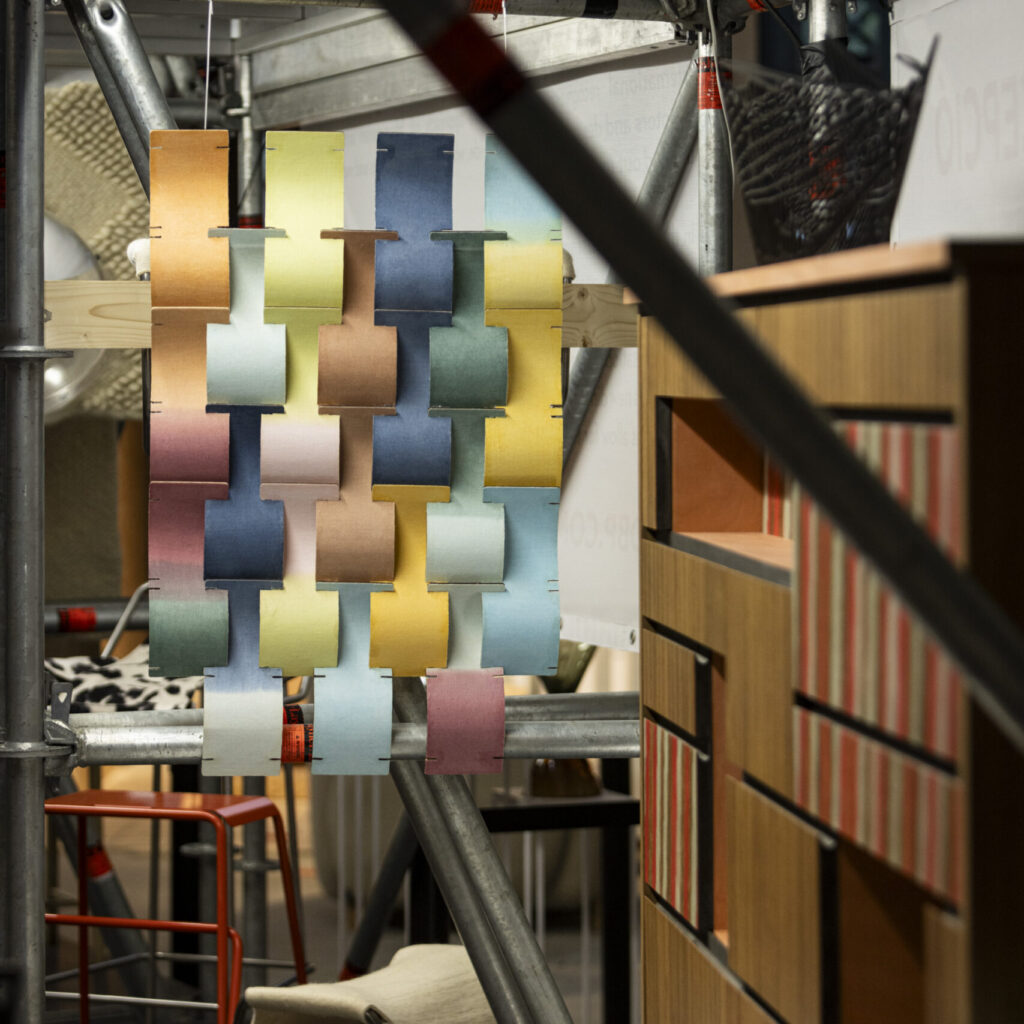
For the first time, the Hungarian Fashion & Design Agency (HFDA) launched an independent open architectural design competition for the visual presentation of the now twice Red Dot-winning 360 Design Budapest exhibition. The task for the visual designers and architects applying to the call was to create a venue that is valuable in its own right and harmonises the exhibition space, the objects, and the curatorial concept, which will be on display between 9 and 19 October. Once again, a distinguished professional advisory board supported the evaluation of the submitted designs and the selection of the winning entry, ensuring that visitors would experience an architectural character that best aligns with the exhibition’s themes. Let us present the members of the professional board!
Ákos Dániel Bara, Architect-Designer
Ákos Dániel Bara has worked in design since the age of twenty. He earned his degree in architecture in 2003 from the Hungarian University of Applied Arts. The same year he founded his office, Bara Architect and Design Studio. From the very beginning, he has worked professionally in television set design on the international stage, later expanding into interior and architectural design. His portfolio includes numerous five-star hotels, restaurants, sports centres, private residences, and even an entire district of 650 apartments, spanning cities from Los Angeles to London, Paris, and Beijing. He typically works in fields where design and fashion are integral to business success, and as a result, his creations are distinguished by a timeless design philosophy. His work has received numerous international professional awards, most notably six accolades at the prestigious Restaurant and Bar Design Awards in London, one of the world’s leading competitions in restaurant design. He is a member of the Interior Design Section of the Chamber of Hungarian Architects, the Association of Hungarian Interior Designers, and the Association of Hungarian Architects.
József Martinkó, Editor-in-Chief, OCTOGON Magazine
After completing his studies in Hungarian literature and linguistics at Eötvös Loránd University (ELTE), József Martinkó pursued a career in cultural journalism. From 2000 to 2005, he served as editor of OCTOGON Architecture & Design magazine and was a member of the OCTOGON Architectural Workshop, regularly publishing architectural critiques. Since 2003, he has frequently contributed to leading design and public-interest media, and in the same year, he received the Pulitzer Memorial Award as editor of OCTOGON in the Creative Communities category. From 2005 for over three years, he was editor-in-chief of hg.hu, an architectural and design website, and between 2007 and 2009, he worked as an external editor for the TV Deko television channel. He has extensive teaching experience: from 2007 to 2017, he was a lecturer at the Moholy-Nagy University of Art and Design; from 2008, at KREA School of Arts; he teaches at the WERK Academy and delivers lectures at the Budapest College of Communication. Between 2009 and 2010, he was editor-in-chief of Octogon Online and managing editor of OCTOGON magazine. From 2010 to 2014, he served on the judging panel of the Silver Carpenter Pencil Award. Since 2011, he has been editor-in-chief of the online platform Trendguide.hu and the Top Lista Design publication. In 2012, he became managing editor of OCTOGON magazine, and in 2015, he assumed the position of editor-in-chief.
Márton Pintér, Architect, Creative Director, University Lecturer, Associate Professor at METU
Márton Pintér earned his architecture degree at MOME in an unconventional manner, submitting a thesis without floor plans or sections. Shortly thereafter, he founded his architectural studio, grounded in transparent market experience. Rather than simply advancing a traditional architectural career, he was interested in challenging the professional status quo. He summarised his decades of work in a self-reflective doctoral dissertation titled The Architectural Practice, the Specialist Barbarian and the Specialist, which was based on the triad of vision, money, and facts: the practitioner honours all three, the specialist barbarian ignores one, and the specialist focuses on just one. His doctoral masterwork was the winning and realised Biennale project “There Is Nothing to See Here”, which received positive international media coverage. The project placed architectural knowledge liberated from the burdens of the construction industry in the spotlight and simultaneously offered a critical stance against a quantitative-driven world through the “No is more…” manifesto.
The now-closed call for entries is available HERE. If you want to learn about the latest trends in design, visit the Buda Castle District between 9 and 19 October, where this year’s edition of the 360 Budapest Design exhibition awaits.